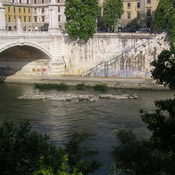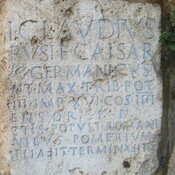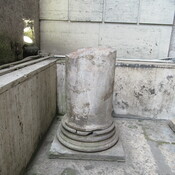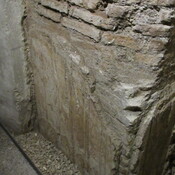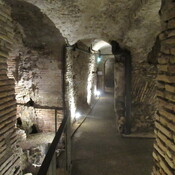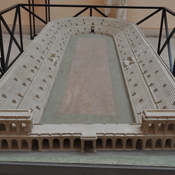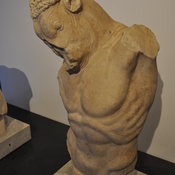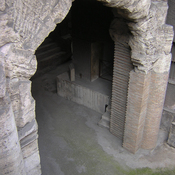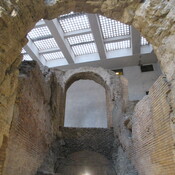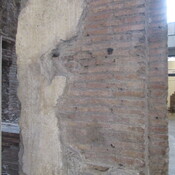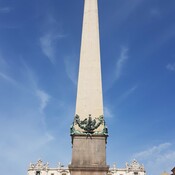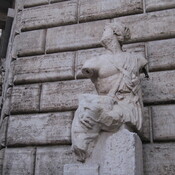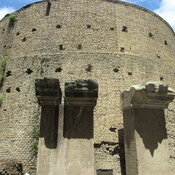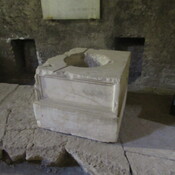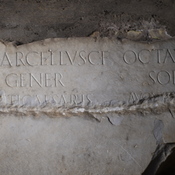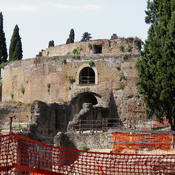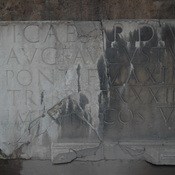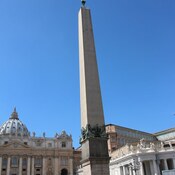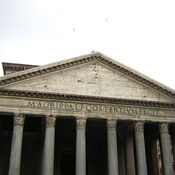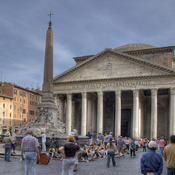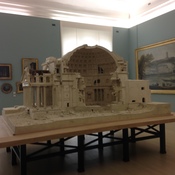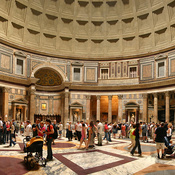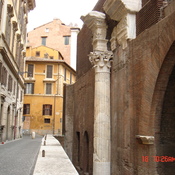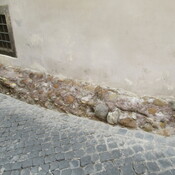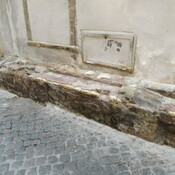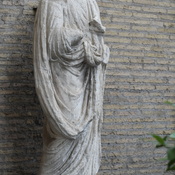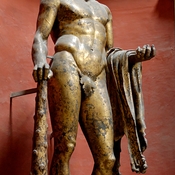Il n'y a pas une annotation en français. Présenté est une annotation en Anglais.
This building was initially commissioned by the Roman Emperor Hadrian as a mausoleum for himself and his family. The building was later used by the popes as a fortress and castle, and is now a museum.
It was built between 135 AD and 139 AD. Originally the mausoleum was a decorated cylinder, with a garden top and golden quadriga. Hadrian's ashes were placed here a year after his death in Baiae in 138 AD, together with those of his wife Sabina, and his first adopted son, Lucius Aelius, who also died in 138 AD. Following this, the remains of succeeding emperors were also placed here, the last recorded deposition being Caracalla in 217 AD. The urns containing these ashes were probably placed in what is now known as the Treasury room deep within the building.1
Références
- ↑Wikipedia: Castel Sant'Angelo
This building was initially commissioned by the Roman Emperor Hadrian as a mausoleum for himself and his family. The building was later used by the popes as a fortress and castle, and is now a museum.
It was built between 135 AD and 139 AD. Originally the mausoleum was a decorated cylinder, with a garden top and golden quadriga. Hadrian's ashes were placed here a year after his death in Baiae in 138 AD, together with those of his wife Sabina, and his first adopted son, Lucius Aelius, who also died in 138 AD. Following this, the remains of succeeding emperors were also placed here, the last recorded deposition being Caracalla in 217 AD. The urns containing these ashes were probably placed in what is now known as the Treasury room deep within the building.1
Références
- ↑Wikipedia: Castel Sant'Angelo
Het gebouw dat nu bekend staat als De Engelenburg werd tussen 135 em 139 gebouwd door keizer Hadrianus als een mausoleum voor zichzelf en zijn familie. Oorspronkelijk was het gebouw een gedecoreerde cylinder met een tuin op het dak. Een jaar na zijn dood in Baiae in 138 werd het as van Hadrianus hier bijgezet, samen met dat van zijn vrouw Sabina en hun eerste geadopteerde zoon Lucius Aelius. Hierna werd ook latere keizer hier bijgezet. De laatste keizer waarvan bekend is dat dit gebeurd is is Caracalla in 217. De urnen werden waarschijnlijk in de kamer geplaatst die nu bekend staat als de schatkamer, diep in het binnenste van het gebouw.




